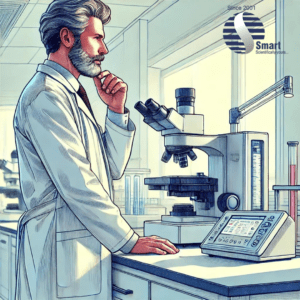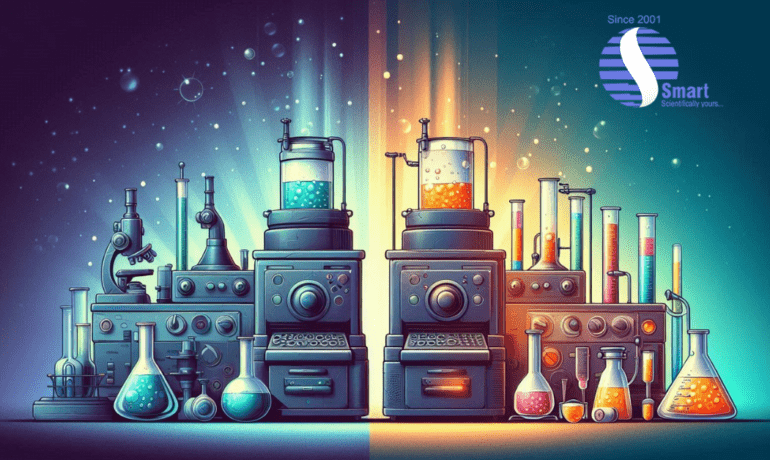When to Upgrade Your Laboratory Equipment: 5 Signs You Can’t Ignore
In any lab environment, having reliable and efficient laboratory equipment is essential for ensuring accurate results and maintaining safety standards. However, knowing when to upgrade your equipment can be challenging.Then how do you determine when it’s time to change your equipment? Here are five key signs that will signal you that it might be time to consider investing in new laboratory equipment.
1. Frequent Repairs and Downtime
One of the most obvious signs that it’s time to upgrade your laboratory equipment is when repairs become frequent and costly.
- Increased Repair Costs: If you’re spending a lot on repairs, and the costs are getting higher each time, and when these costs become a considerable percentage of what the equipment is worth, it’s a clear indicator that you need an upgrade.
- Downtime Impact: Frequent downtime not only affects the productivity of your lab but can also compromise the accuracy of your results. And let’s be honest, nobody wants to be the lab that’s more offline than online.
Tip: Track repair costs and downtime to identify patterns. If you notice a trend of frequent failures, consider upgrading to minimise disruptions and costs in the long term.
2. Outdated Technology
With the rapid advancement of technology, laboratory equipment can quickly become obsolete. Using outdated technology can put you at a competitive disadvantage.
- Lack of Compatibility: New methods and techniques may not be compatible with older equipment that you have, limiting your lab’s capabilities.
- Decreased Productivity : Modern laboratory equipment often offers enhanced features, greater automation, and improved precision, allowing for faster and more accurate results. Because while retro is cool in fashion, it’s less appealing when it comes to getting reliable test results.
Solution: Regularly review new technologies and advancements in laboratory equipment to ensure your lab stays current and efficient.
3. Declining Accuracy and Precision
If your laboratory equipment is no longer delivering the level of accuracy and precision you require for your research or quality control, it’s time to consider an upgrade.
- Signs of Inaccuracy: If calibration becomes more frequent or if results are inconsistent, it may indicate that the equipment’s components are wearing out.
- Impact on Research: Inaccurate equipment can lead to errors in research, regulatory non-compliance, and potentially costly mistakes.
Recommendation: Schedule regular calibration and testing to monitor the performance of your equipment. When accuracy starts to decline despite regular maintenance, it’s time to explore new options.
4. Safety Concerns
Safety should always be a top priority in any laboratory. Obsolete or malfunctioning equipment can pose serious risks to lab personnel.
- Potential Hazards: Older equipment may have wear and tear that could lead to malfunctions or even accidents.
- Compliance Issues: If your equipment no longer meets current safety standards or regulations, upgrading is essential to ensure compliance and protect staff.
Action Step: Regularly assess the condition and safety of all laboratory equipment. If you identify any safety concerns, prioritise upgrading those items to safeguard your team.
5. Expansion or New Research Requirements
As your laboratory grows or begins new lines of research, your existing equipment may no longer meet your needs.
- Scaling Up Operations: New projects or an increased workload may require additional capacity or specialised equipment.
- New Research Needs: Different research requirements may need specific types of laboratory equipment that your current setup cannot provide.
Plan Ahead: Evaluate your lab’s future needs and consider upgrading equipment proactively to accommodate growth and new research directions.

Additional Factors to Consider When Upgrading Laboratory Equipment
Upgrading laboratory equipment is a significant investment,both of your time and finances, so it’s essential to make informed decisions. Here are some additional factors to consider:
Assess Your Current Inventory
- Do an Equipment Audit: Document the current status of all equipment, noting any issues, maintenance history, and performance levels.
- Prioritise Needs: This involves finding out which equipment is the most critical to your operation and what upgrades will benefit you the most.
Calculate the Return on Investment (ROI)
- Cost-Benefit Analysis: Compare the costs of continued repairs versus the price of new equipment. Consider the long-term benefits, such as increased productivity and reduced downtime.
- New and Enhanced Capabilities: Evaluate how new features and technologies could improve the efficiency and capabilities of your laboratory.
Stay Ahead of Regulatory Changes
- Compliance Upgrades: Monitor any changes in regulations that may require you to upgrade your equipment to stay compliant.
- Safety Standards: Make sure any new equipment meets the latest safety standards to protect both your personnel and your research integrity.
Plan for Future Success with Regular Equipment Upgrades
Deciding when to upgrade your laboratory equipment is critical for maintaining high standards of research, safety, and efficiency. Regularly monitoring the performance, safety, and technological advancements of your equipment can help you make informed decisions and avoid unnecessary disruptions.
By staying proactive and recognizing the signs that it’s time for an upgrade, you can ensure that your laboratory remains a safe, efficient, and productive environment. Remember, investing in new equipment isn’t just about replacing old tools — it’s about investing in the future success of your laboratory.
Don’t let outdated or unreliable equipment hold your lab back. Take the next step toward efficiency, accuracy, and safety. Contact SmartLab Tech today to explore the latest in laboratory equipment solutions.
Call us at 72888 88016 or mail to marketingsupport@smartlabtech.net and ensure your lab is prepared for the future!

